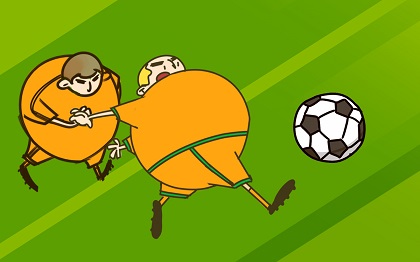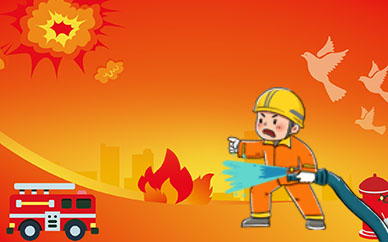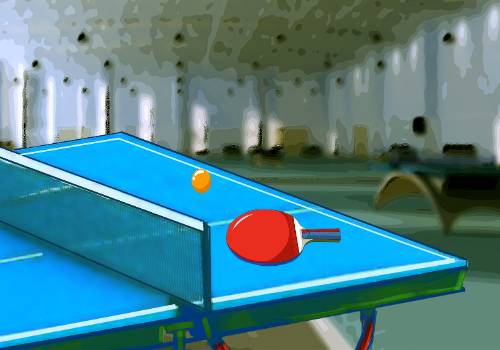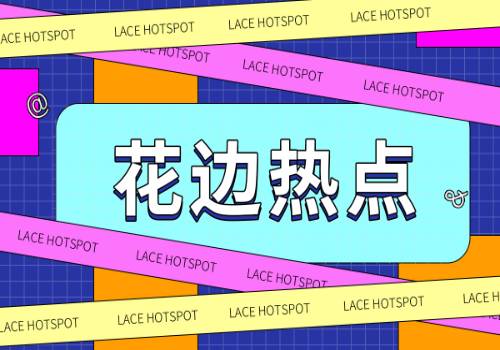播报:CISH Group 4 Science Project
X 关闭
CISH Group 4 Science Project
CISH
TheGroup 4 projectis a collaborative activity where students from different Group 4 subjects work together on a scientific or technological topic, allowing for concepts and perceptions from across the disciplines to be shared in line with aim 10—that is, to “develop an understanding of the relationships between scientific disciplines and their influence on other areas of knowledge”. The project can be practically or theoretically based. Collaboration between schools in different regions is encouraged. The G4 project allows students to appreciate the environmental, social, and ethical implications of science and technology. It may also allow them tounderstand the limitations of scientific study, for example, the shortage of appropriate data and/or the lack of resources. The emphasis is on interdisciplinary cooperation and the processes involved in scientific investigation, rather than the products of such investigation. The choice of scientific or technological topic is open but the project should clearly address aims 7, 8, and 10 of the group 4 subject guides (DP Biology Guide 2016).
 (资料图片)
(资料图片)
Group 1 - by Henry Bai
Biosphere 2 is a world-renowned NASA project that aims to create a self-sustaining microcosm, a closed system where the only transfer is energy. However, such ambitious endeavors come with drawbacks and limitations. Our team has tackled 2 main limitations to propose a feasible and actionable solution. We researched coatings to apply, with the aim of preventing concrete from cracking and lowering its moisture in order to lower its reactivity to our environment and its surrounding gases including oxygen and carbon, elements that are imperative for the mutual, self-sustaining relationship between plants and consumers where photosynthesis and respiration function in tandem cyclically. Secondly, we"ve researched the absorption spectra of glass panes to decide on and select the most suitable tints and pigments for glass. This is one of the underlying problems with glass"s high reflectivity for our habitat. So, we chose blue and red as our main solutions to maximize light access for our producers. With consideration of energy, another approach inspired by mathematics was our application of parabolic mirrors to centralize all of our sun rays.This was to deflect them all and concentrate them on the central region of our habitat. In a nutshell, this concludes the main solutions that our project has embarked on to resolve. This is in order for a more self-sustaining infrastructure for future terrestrial habitats to reference. Overall, this was a wonderful 3-day endeavor that ended our school year on a high note. It was an opportunity for us to use up all of our remaining bursts of energy to fully optimize our learning experience.
Group 2- by Harold Heo
Title: From Engine to Motors
Team Members: Harold, Sean, John, and Henry.
Approximately 5.6 tons of carbon dioxide are produced per vehicle manufactured. 75% of this carbon dioxide is emitted from the steel chassis and the paint that covers its chassis. Our Group 4 Project was about investigating and evaluating this eco-friendly transition from the perspective of Chemistry, Physics, Environmental Science, and Computer Science. Is there a way to recycle these painted steel chassis and convert gasoline vehicles to electric ones? This will prevent environmental harm caused by both the production and use of these vehicles.
Group 3- by Martin Sulik
Title: Students" vitamin consumption Research question: What are the effects of vitamins on a high school student"s mental and physical health? How can vitamins ensure good mental and physical health?
Our project aimed to investigate the effects of vitamins on high school students" mental and physical health. By integrating knowledge from Biology, Chemistry, Sport Science, and Computer Science, we conducted a comprehensive analysis to understand the impact of vitamin intake on students" well-being. Throughout our research, we examined various vitamins and their effects on mental and physical health. Among the vitamins studied, B vitamins had the most significant influence on mental health. However, it is worthwhile to note that all vitamins have their own benefits and drawbacks. Our research highlighted the importance of vitamins in quantities. Vitamin intake can be achieved through a healthy and balanced diet. This includes a variety of meals with vegetables, fruits, and other nutrient-rich sources. By leveraging the disciplines of Biology, Chemistry, Sport Science, and Computer Science, we gathered data related to vitamin intake, mental health indicators, and physical well-being. Our findings underscored the importance of understanding vitamins" role in maintaining good mental and physical health among high school students. In conclusion, our project emphasized the significance of vitamins, particularly B vitamins, in promoting positive mental health. We also highlighted the importance of a well-rounded diet to ensure the appropriate intake of vitamins. By shedding light on the effects of vitamins on high school students" mental and physical health, we hope to contribute to the broader understanding of how nutrition impacts overall well-being in educational settings.
Group 4- by Emily Lee
Group number 4, consisting of Manolo, Emily, Ailee, and Sunshine, examined a real-world issue of volcanic activity through this project. Each was responsible for different science areas. Sunshine handled chemistry, Emily took biology, Ailee"s in Environmental systems and societies, and Manolo"s in Sports, exercise, and health science. As a team, we investigated and analyzed what volcanic activity is, how it occurs, and what impacts it causes. We also investigated how and why it happens in various fields.
For us to explore it in more detail, we chose one of the most representative impacts of volcanic activity, volcanic ash. We researched that in each of the four scientific fields. Moreover, for us to make a deeper exploration and a clear connection with the real world, we chose the most active volcano in the Philippines, called Mayon Volcano. In the process of selecting and investigating the actual volcano, we once again realized that problems affecting both the environment and humans still exist and are serious. As we looked into its actual solutions, we also found that many real-world issues can"t be solved with science. Through this, all of our team members had questions about 5W and 1H. What is it?When? And why did it happen, who"s involved in this case, and how can it be stopped or solved? By making deep considerations, questioning ourselves, and realizing the connection between science and our world, we collectively achieved the purpose of the Group 4 project. We developed it again. This project also improves students" communication and teamwork skills. Our group has naturally developed by coordinating large and small tasks through consultation between members. We also shared each other"s research knowledge, ideas, and thoughts.
Even though we worked together through communication, the difficulty we had during the project was related to teamwork. It wasn"t easy to organize everything from start to end, mostly because we didn"t have that much experience taking on long-term projects. It took us a day to set a topic and research direction. It took another day to find relevant research data, understand it, and then explain it to each other. On the last day, we put our work on a whiteboard and presented it to all the teachers. At the end of the project, we realized that although all the difficulties we had were related to teamwork, solving them was also through teamwork.
In the Group 4 project, we"ve done so many things together that it feels like three days are short, and we"ve faithfully fulfilled our roles. In that process, we"ve acquired communication and teamwork skills, but also patience, insight, and dedicated work skills.
Group 5- by Cindy Liu
Cooum River: Water Pollution and Solutions
Water pollution is a raging environmental issue that affects aquatic ecosystems, organisms, and even humans worldwide. The Cooum River, located in Chennai, India, is one such ecosystem heavily impacted by water pollution. Pollutants such as plastic waste, chemicals, and untreated sewage liquids have made the river unsuitable for many organisms.
Our project focuses on understanding the extent of water pollution"s impact on the ecosystem, and what measures can be taken to resolve the issue. Our group members are Cindy Liu, Barry Bai, Sharon Wu, and Anna Yao. Our project brings together the fields of Biology, Physics, Chemistry, and Environmental Systems and Societies (ESS) in order to develop a comprehensive understanding of the problem and potential solutions. Through this interdisciplinary approach, we created a prototype for a water filtration system. This was to aid the growth and development of organisms depending on the Cooum River for survival. This prototype can be easily made from common materials and developed and industrialized by the Indian government. This will promote the Cooum River"s sustainability. This system may resolve different problems within these four subjects, like increasing dissolved oxygen levels, surface tension, photosynthesis rates, organism population, etc. Plastic waste, chemical waste, and oil spills are among the major contributors to this pollution. Effective measures such as the use of this water filtration system can be taken to reduce waterpollution in the Cooum River. This prototype water filter using biochar, rocks, sand, and charcoal can provide clean water by filtering out impurities. By taking action to mitigate water pollution"s negative impacts, we can promote sustainability and preserve our ecosystems for future generations.
Group 6 - by Michael Shi
For our Group 4 Project, we have designed a product centered around tackling the hygiene issues faced by the female population of menstrual age within rural communities in India. Since we have recognized discrepancies between urban and rural life quality and method, a factor of focus has been identified as menstrual products. Therefore, the center point for this project in terms of our group is developing a menstrual pad better suited to the needs of these aforementioned women. Throughout the planning process, we managed to integrate all four subjects, Biology, Chemistry, ESS, and Computer Science into the core of the developmentscheme. Overall, this has been a fruitful experience that has successfully cultivated an ability to interconnect scientific concepts among students of different course areas.
Group 7 - by Harry Kim
For our group 4 project, we decided to research artificial gravity and space farming. Throughout the project, we had a very meaningful experience exploring how such random topics can come together. We also explored how they could be explained in the areas of science we have explored. As we assembled our personal findings, it felt like we were matching a puzzle set together. This certainly was an interesting journey. It was also a blast to build effective models showcasing our learning and going through multiple iterations to complete them. There were multiple obstacles, even when we chose our topic, which dragged our processes longer than expected. I do agree with you that, overall, it was a very meaningful process to cooperate and draw together what we have learned individually into an interesting topic in a joint effort.
X 关闭
推荐内容
- 播报:CISH Group 4 Science Project
- 新消息丨引领拉面界的新品——味尚拉面
- 环球焦点!蛋白补得好健康没烦恼,夏天吃八道高蛋白美食,增强免疫身体好
- 焦点日报:罕见!赔400万违约金 也要更换保荐机构!小券商如何翘单?“老板”亲自上阵 配10人专门“服务”
- 甘宁"好邻居"直播带岗 14万余人次云找"薪"动offer
- 北海市气温1月到12月气温(北海气温) 世界视点
- 国家防办、应急管理部部署重点地区防汛抗旱工作
- 智通ADR统计 | 6月28日|环球今亮点
- 精选!“五社联动·家园助力站”项目线下经验交流会举行
- 史上最坑爹的游戏2攻略大全答案_史上最坑爹的游戏2攻略|天天速看
最近更新
-

播报:CISH Group 4 Science Project
资讯 -

新消息丨引领拉面界的新品——味尚拉面
资讯 -

环球焦点!蛋白补得好健康没烦恼,夏天吃八道高蛋白美食,增强免疫身体好
资讯 -

焦点日报:罕见!赔400万违约金 也要更换保荐机构!小券商如何翘单?“老板”亲自上阵 配10人专门“服务”
资讯 -

甘宁"好邻居"直播带岗 14万余人次云找"薪"动offer
资讯 -

北海市气温1月到12月气温(北海气温) 世界视点
资讯 -

国家防办、应急管理部部署重点地区防汛抗旱工作
资讯 -

智通ADR统计 | 6月28日|环球今亮点
资讯 -

精选!“五社联动·家园助力站”项目线下经验交流会举行
资讯 -

史上最坑爹的游戏2攻略大全答案_史上最坑爹的游戏2攻略|天天速看
资讯 -

制度流程建设_制度流程-天天热议
资讯 -

工业分析与检验专业介绍(工业分析与检验)
资讯 -

世界快消息!以鞋为媒,温州首届鞋文化周向世界展示“中国鞋都”魅力
资讯 -

火灾危险性类别表-火灾危险性类别怎么填|环球最资讯
资讯 -

华商记者帮|小区大部分水表箱成了“老鼠窝” 业主:担心用水安全问题
资讯 -

桂东电力:公司水电厂所属流域来水量同比下降,火电煤价同比上涨
资讯 -

北流市多处突发暴雨洪涝,供电人员紧急开展抢修|头条焦点
资讯 -

热消息:边际成本和边际收益的区别_什么事边际成本和边际收益
资讯 -

广东:深入推进数据要素市场化配置改革_速讯
资讯 -

“小课堂”释放“大能量”——东阿黄河河务局水政执法微课堂开展侧记
资讯 -

东方基金薛子徵:关注国企背景龙头房企 当前消息
资讯 -

【时快讯】“全域”虚拟电厂 聚合碎片化负荷资源 参与电网削峰填谷
资讯 -

环球快资讯丨烟台海参价格表_烟台海参
资讯 -

2023玉溪中考成绩查询时间(开始/截止时间)
资讯 -

橘生淮南则为橘生于淮北则为枳出自哪篇文章_橘生淮南则为橘生于淮北则为枳意思-天天快资讯
资讯 -

WWDC23 那些你不知道的事:苹果是如何保护隐私的?
资讯 -

全球热点!欧股开盘普涨
资讯 -

温岭市2023年秋季初中七年级招生计划表_世界新资讯
资讯 -

超30个品牌销量下跌,速溶咖啡不香了?
资讯 -

蓝点触控获数千万元Pre-A轮融资
资讯 -

天天热门:有怨抱怨,有恩报恩的成语_形容有恩报恩有怨报怨成语简介介绍
资讯 -

全球快看:谷歌被曝放弃研发AR智能眼镜 将专注构建AR软件平台
资讯 -

急捷
资讯 -

《公民生态环境行为调查报告(2022)》发布 呵护自然生态、节约能源资源等领域表现良好|全球消息
资讯 -

环球看热讯:国内首台12兆瓦 海上风电机组完成安装
资讯 -

iPhone 15 系列面板订单透露苹果秘密,Pro机型将成主打产品-环球热资讯
资讯 -

焦点讯息:炎陵“五办”机制助力优化营商环境
资讯 -

太原市朝阳社区组建志愿服务队 让老人安享幸福晚年
资讯 -

南京理工大学:培养敢闯会创的学生
资讯 -

天天动态:新股提示:恒工精密、海科新源、天力复合今日申购
资讯 -

九安医疗:连续8日融资净偿还累计8500.86万元(06-26) 环球看热讯
资讯 -

每日速递:【环球财经】俄罗斯紧张局势影响有限 国际油价26日小幅上涨
资讯 -

每日看点!格华止正确服用方法及用量_格华止服用方法
资讯 -

欧佩克秘书长:预计2045年全球每天石油需求量将达1.1亿桶
资讯 -

中宠股份(002891):6月26日北向资金增持20.74万股|环球关注
资讯 -

宫寒引起不孕怎么调理最好_宫寒引起不孕怎么调理
资讯 -

启辰大V DD-i超混动于7月8日上市,预售价13万元起-环球即时
资讯 -

凉宫春日的忧郁小说结局_凉宫春日的忧郁第三季|全球微资讯
资讯 -

为生命让行 折射人间大爱
资讯 -

关于挫败的文案-全球时快讯
资讯 -

顺鑫农业拟剥离房地产业务 30.98亿挂牌顺鑫佳宇100%股权-环球信息
资讯 -

北京银行发布“京行e收付”场景支付金融服务品牌
资讯 -

图片报:迄今为止拜仁内部没有讨论过和芒特有关的话题-当前消息
资讯 -

近4200多只个股下跌,建议多看少动耐心等待_百事通
资讯 -

天天快看:又一高校,拟年内整体搬迁!
资讯 -

【环球时快讯】痛心!26岁失联女子遗体被打捞上岸
资讯 -

上海复旦(01385)将于7月5日派发A股每股现金红利0.135元
资讯 -

前沿资讯!瓦格纳“叛乱”,中美俄欧、瓦格纳、乌粉自媒体,用词很不同!反映各自心思
资讯 -

金山wps怎么转换成word(wps怎么转换成word)
资讯 -

大话西游2:未转36级召唤兽领悟价值60万元?|世界热闻
资讯 -

小鸡腿怎么做才好吃? 环球时讯
资讯 -

世界即时:帮她变美出门约会_变美小窍门
资讯 -

天天微速讯:中外合作办学硕士开班时间你知道吗?值得收藏!
资讯 -

【天天报资讯】怎么解决戴耳机录屏没声音(怎么解决戴耳机录屏没声音vivo)
资讯 -

环球关注:不是不爱你txt下载_不是不爱才分开
资讯 -

雷诺吉格四米以下SUV概念车亮相
资讯 -

理想L6谍照曝光,好像伪装了,又好像没伪装 重点聚焦
资讯 -

全球今热点:emma mae磁力种子_emma mae迅雷磁力
资讯 -

Linux 6.4发布 包含早期苹果M2、WiFi 7代码 AMD引导的自主模式 每日消息
资讯 -

宁德时代拟为员工买房提供无息借款 全球要闻
资讯 -

西游记故事梗概450字左右_西游记故事梗概450字
资讯 -

人工学园2攻略_人工学园
资讯 -

119.9!2023浙江开放指数正式发布 世界看热讯
资讯 -

氧传感器多久清洗一回(氧传感器多久清洗?)
资讯 -

2023张学友60+巡回演唱会时间表(持续更新)
资讯 -

力量宝珠有哪些2021_力量宝珠有哪些
资讯 -

投笔从戎文言文翻译 投笔从戎的含义和原文
资讯 -

2023泸州中考成绩公布时间+查询网站入口
资讯 -

2023年睢宁县义务教育学校招生政策解读|世界讯息
资讯 -

聚焦:最新!“泰坦”号内爆隐情浮出……卡梅隆:我一听到出事,首先想到的就是……
资讯 -

moto razr 40开售:3999的折叠屏卖疯了 天天动态
资讯 -

世界观焦点:广铁集团是国企还是央企
资讯 -

宁波市四年内将建成110个五星级母婴室
资讯 -

2023年4月中国与拉脱维亚双边贸易额与贸易差额统计-焦点要闻
资讯 -

全球资讯:家乡的桥阅读答案三年级_家乡的桥阅读答案
资讯 -

格列兹曼的代表和利雅得胜利高层在伦敦会面。球员的...
资讯 -

今日视点:为什么电脑键盘打不出字_键盘没坏但电脑不能打字怎么办
资讯 -

热门看点:俄外交部警告西方:从武装叛乱中获利的是俄外部敌人
资讯 -

六月上旬,两情相悦,互诉衷肠,3生肖缘分来之不易,旧情人回眸
资讯 -

【环球报资讯】永辉超市供应商供零_永辉超市供应商系统
资讯 -

孵鸡蛋的故事_小公鸡孵蛋故事 视讯
资讯 -

轩辕传奇手游弑神装备怎么获得(轩辕传奇弑神怎么升级)
资讯 -

微动态丨欧也妮葛朗台作品简介_欧也妮葛朗台简介
资讯 -

焦点观察:中国科学家发现河蚌铰链的耐疲劳秘密
资讯 -

“南国夏令营”出新品 生存挑战营(双语)受到家长青睐-观天下
资讯 -

有机氮羟基化合物构筑的配位聚合物及其功能性质研究(对于有机氮羟基化合物构筑的配位聚合物及其功能性质研究简单介绍)
资讯 -

根号怎么打_根号打法简述
资讯 -

法国文学经典:铃兰
资讯 -

红旗官宣:新轿车两天后上市!陈大续航长,还看比亚迪汉?
资讯 -

菲律宾周六周日清关_周日清关
资讯
Copyright © 2015-2022 南非办公网版权所有 备案号:沪ICP备2022005074号-13 联系邮箱:58 55 97 3@qq.com


